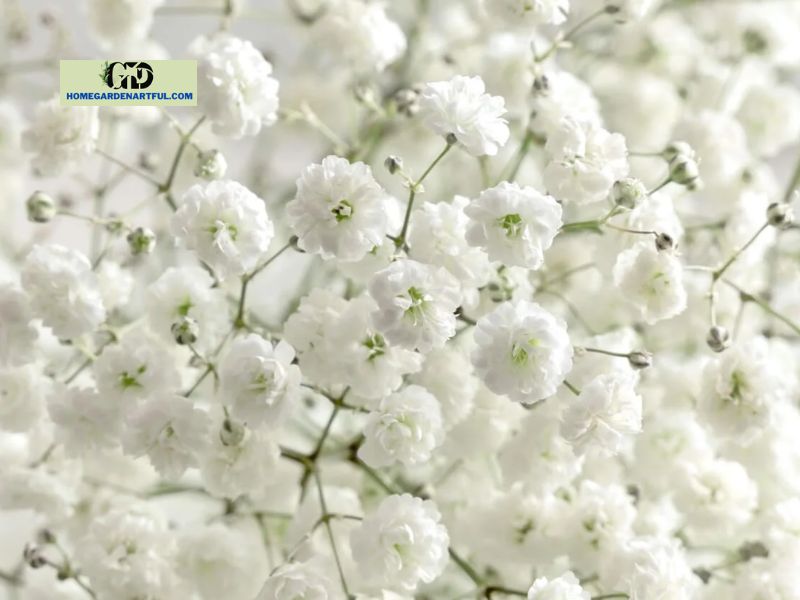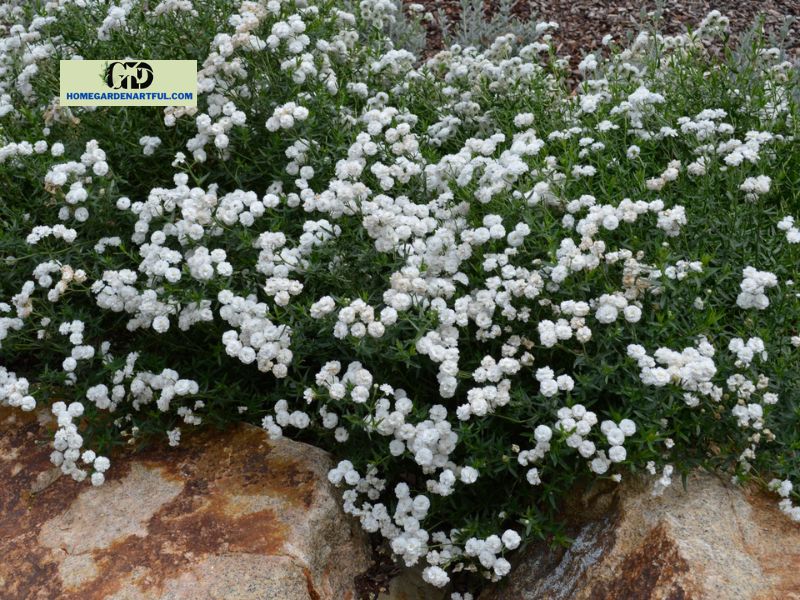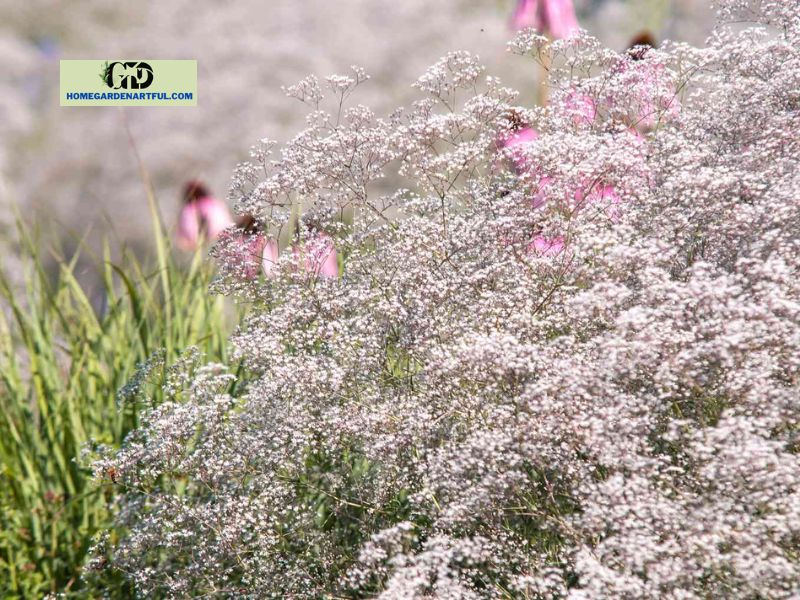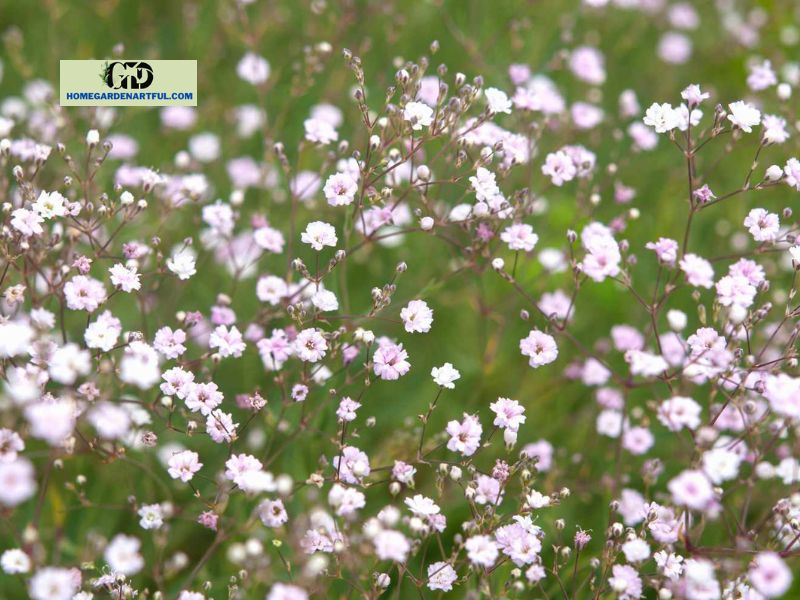You love Angels Breath Flower. Although baby’s breath is often used in flower arrangements, it also looks great in gardens. Little, delicate white or pink flower sprays are a charming complement to floral arrangements and offer a tenderness to ornamental plantings. There are numerous cultivars to choose from, including creeping, low-growing varieties that provide vibrant ground cover. This is all the information you need to cultivate baby breath in your garden. Discover at homegardenartful.com!
Angels Breath Flower Care

Once established, a baby’s breath is one of the easiest plants to take care of. Generally speaking, plants only require water in extremely hot and dry conditions or during prolonged dry spells. Once a year in the spring, fertilize your baby’s breath plants with organic fertilizer.
When more than half of the blooms on a spray have faded, you can deadhead the plant as its flowers are about to die back. After the spring or summer bloom time is over, trim back lanky growth to promote a second, or even a third, wave of blooms in cooler climates.
For perennial varieties, it is ideal to trim the entire plant down to a few inches above the soil after the fall blooming is over. Next year, this will promote more complete growth.
Best Growing Conditions for Baby’s Breath
Plant baby’s breath in an area with very well-drained soil that is ideally neutral or slightly alkaline, and that receives at least six hours of sunlight per day. For clayey soils, add organic materials, such as compost or shredded leaves, to improve drainage.
Different Baby Breath Types

Although the genus Gypsophila contains many species, gardeners are mostly interested in two types of plants: annuals and perennials. Growth habits are another thing to think about. While some species grow in huge masses, creeping, low-growing varieties are great for creating ground cover.
Gypsophila muralis is an annual plant that comes in white and pink ‘Gypsy White Improved’ and ‘Gypsy Deep Rose’ variants. Evergreen plants such as Gypsophila paniculata and Gypsophila repens, of which there are white and pink cultivars, are great additions to flower gardens since they grow again every year.
Keep in mind that perennial baby’s breath is forbidden in some areas and is regarded as an invasive plant, so before planting, make sure you understand the local laws.
How to Propagate Baby’s Breath
It’s simple to propagate baby’s breath from cuttings. Once your plant is actively growing, which is in the spring or summer, you’ll get the best results.
- Step 1: Add potting soil to the pot and thoroughly wet it with water. About halfway down, make a hole in the ground with your finger or a pencil.
- Step 2: Choose ripe, healthy stems and cut sections that are roughly six inches long while wearing gloves to prevent hand irritation. Just below a leaf node, make the cut. Clear the lower third of the cuttings of any foliage.
- Step 3: Insert the cuttings into the dirt hole you dug. The cuttings should be placed in a warm area with indirect, bright light. Don’t let the soil get too wet. To assist in retaining humidity, you can tent a clear plastic bag over the cutting.
- Step 4: Give the cuttings a light tug on the stem once you notice fresh leaf growth, which should happen in about a month. Resistance indicates that they are well-established. Now that they are adjusted to outdoor light, they can be moved outside.
Typical Issues With A Baby’s Breath

Although growing a baby’s breath is not too difficult, the plant may suffer from crown and root rot due to soil-borne diseases that multiply in poorly drained environments. Flowers and foliage can also be harmed by bacterial and fungal problems.
Preventing these problems before they arise is the best approach to address them. When planting your baby’s breath, make sure the soil conditions are ideal and the plant is in a dry spot. Water the soil immediately to prevent the growth of diseases.
How to Get Baby’s Breath to Bloom
For perennial baby’s breath to blossom, the best practices are to deadhead and trim the plant each fall. Make sure you select the best location for your planting because flowers can also be impacted by excessive moisture in the soil and a lack of sunlight.
If you’re planting an annual baby’s breath, you should plant seeds every two weeks to ensure summertime blooming.
FAQs
Is Taking Care of a Baby’s Breath Easy?
Baby’s breath is low maintenance and simple to take care of with the right growing conditions and basic attention.
How much time can a baby’s breath last?
In cooler locations, annual cultivars will die back in the winter and must be replanted annually. When grown from seed, perennial cultivars may take two or three years to bloom, but they can renew every year.
Does a Baby’s Breath Grow Inside?
Although it may be grown in pots, baby’s breath prefers full light, so indoor environments aren’t the best for this plant.


